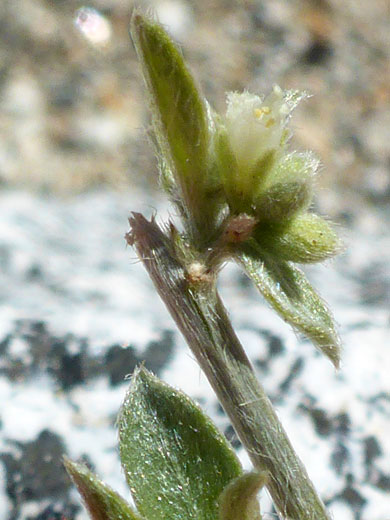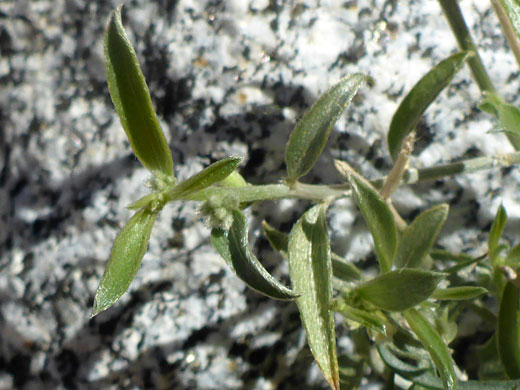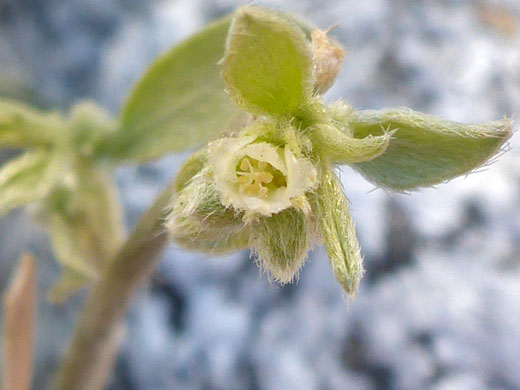Common name:
Lance-leaved ditaxis
Family:
Scientific name:
Ditaxis lanceolata
Main flower color:
Range:
The Sonoran Desert, Arizona and California
Height:
Up to 20 inches
Habitat:
Canyons, washes, rocky slopes; up to 1,500 feet
Leaves:
Alternate, narrowly lanceolate; up to 2 inches long, appressed-hairy, untoothed, on stalks of up to 1 inch
Season:
February to May
Leaves, stems and sepals of ditaxis lanceolata have a covering of appressed, silvery-white hairs, of varying lengths. Leaves are alternate, lanceolate, often slightly folded up along the midvein, and they have tiny stipules at the base.
Plants produce both staminate and pistillate flowers, both with five sepals and five petals (hairy on the undersurfaces); the former have sepals slightly smaller than the petals, and between five and 15 stamens, while for the latter the petals and sepals are the same size, around 0.15 inches. Petals are greenish white, and the flowers are rather inconspicuous. Flowers are arranged in small clusters at the upper leaf nodes and the tip of the branched stems.
Plants produce both staminate and pistillate flowers, both with five sepals and five petals (hairy on the undersurfaces); the former have sepals slightly smaller than the petals, and between five and 15 stamens, while for the latter the petals and sepals are the same size, around 0.15 inches. Petals are greenish white, and the flowers are rather inconspicuous. Flowers are arranged in small clusters at the upper leaf nodes and the tip of the branched stems.
All Contents © Copyright The American Southwest | Comments and Questions | Contribute | Site Map




